“I’m going to jump now,” I said to the young man standing next to me on the small platform that was attached to a tree about fifty feet above the forest floor. He smiled and waited with patience and just a whiff of good-natured doubt. As a treetop obstacle course guide he’d clearly seen it all.
“One, two, three,” I said and then sat down on the wooden boards. Bump.
Although I was wearing a harness that I trusted completely, although I had just walked tightropes and swung on tire swings even higher in the air, something about the “trust fall” as it is called wasn’t computing in my brain. I couldn’t seem to make my feet step off the platform.
We both laughed and I tried again. Bump. Once again I was still on the platform.
I had already surprised myself with surmounted obstacles during several hours of climbing through the ArborTrek Treetop Obstacle Course at Smuggler’s Notch Resort. It had taken balance and strength. But it seemed that perhaps I wasn’t going to make it through this very last – and very simple – task of getting myself from top to bottom.
Safety is a top priority
If you think that I was at all unsafe during this adventure, let me hasten to tell you that the feeling of danger was all in my head and not at all in the situation. From the moment my family (stepmother Joan, husband Matt, twelve-year-old son Tommy, and eight-year-old son Teddy) arrived at the course I knew we were in good hands.
We began in a tent where harnesses awaited us on the ground. The ArborTrek team moved quickly through our group helping each of us step into the harness and making sure everything was secure. Our harnesses had both a pulley and a double-sided carabiner attached to them.
We discovered at that moment that Matt and Joan weren’t wearing close-toed shoes, a requirement on the course. A quick run back to the car and they were good to go.
The next step was to show us all how we would use the carabiners and zipline pulley on the course.
ArborTrek uses a double locking system called the SmartBelay lifeline for the obstacle course. It’s simple enough for kids to operate and once you are locked in at the very beginning of the course, it’s not possible for you to ever be unconnected.
That means everyone can move from obstacle to obstacle at his or her own pace without the help of a guide.
Practicing in The Creek
Everyone who does the obstacle course starts in a lower area called The Creek. This offers a great chance to get a feel for the harness and also to see what some of the elements are like before going up too high.
This portion of the course is also great for families with preschoolers – children as young as four are invited to complete it and those too young and small to venture onto the larger course can spend their entire time circling through this area taking slightly different paths to try different elements each time.
The Creek is also where the guides can check on kids whose size and age makes them borderline for the larger course. This was true of Teddy who had a reach of just barely the 66 inches required, but who demonstrated that he was ready to handle the challenges that awaited us in the woods.
Moving up high
Once you’ve got The Creek under your belt your guides will take you over to the main area of the course. The design is ingenious – although the whole course with dozens of elements is contained in one relatively small area, there are different tiers or trails offering different levels of challenge in both the obstacles themselves and the thrill factor of height. That means the entire family can be here together but can complete whatever portion of the course is comfortable for them.
Tommy immediately headed up the highest, most challenging portion of the course while the rest of us took our time poking around in the middle section which I wouldn’t call a mere walk in the woods by any stretch.
I felt comfortable letting Tommy go off on his own because there were other people on the course with us and also because the guides are all around offering encouragement and assistance where it is needed.
And Tommy did need help on a couple of occasions – once he just couldn’t make it from one platform to the next because the series of swings he was supposed to step across was just too hard for him. On another he forgot to put his pulley on a zipline and got stuck hanging halfway across. In both instances one of the guides helped him out.
Some activities leave Teddy feeling like he can’t keep up with his brother. Others force us to hold Tommy back so that we can all keep up. What I loved about this course is that we were all able to complete it at the same time with no one feeling left out. Each boy had the satisfaction of pushing himself to the limit of his abilities and feel like he had really accomplished something without worrying about anyone else in the group.
And when I reached a point where I had the option to climb down or continue onto the hardest part of the course where I knew I’d have to trust fall at the end, I surprised myself by continuing.
Year-round adventure
We visited the the treetop obstacle course in August, when the course is open daily; it is open only on weekends in September and October (note that if it snows in October, they close the course). Whether you visit them in the summer or fall, ArborTrek recommends that you call for a reservation. Tours last about two-and-a-half hours. Here is there list of height, weight, and clothing requirements.
Adventure seekers who want to get up in the trees in the winter are in luck. ArborTrek also runs a zipline canopy tour that’s open all year (read the story of my family’s fabulous fun on the zipline tour).
I consider myself a reasonably fit person and I don’t have a fear of heights. But the treetop obstacle course challenged me in the best possible way. Was I a bit tired and sore afterward? You bet. But I felt so proud that I conquered the top expert tier.
On the third try when I was finally able to jump off the platform for the free fall. I landed gently on my bottom on the ground shaking with adrenaline and laughing with the pure joy that comes from physical accomplishment. Bump.
(This video will give you a sense of how I tackled one of the elements on the course. My apologies that it’s vertical – I’ve got to teach Matt to turn his phone when he is recording.)
Mara Gorman may live at sea level now, but she’s a native New Englander and mountain aficionado who grew up skiing in Vermont. She spends as many days each winter as she can chasing her two teen boys through glades and across mogul fields and regularly journeys far and wide to get on the slopes. Mara blogs about her family’s many travel adventures at The Mother of all Trips. She is also the author of The Family Traveler’s Handbook and an award-winning freelance writer whose work has appeared in various USA Today print publications as well as on websites such as BBC Travel. When there’s no snow, Mara and her family can be found hiking, biking and eating around the United States and Europe.

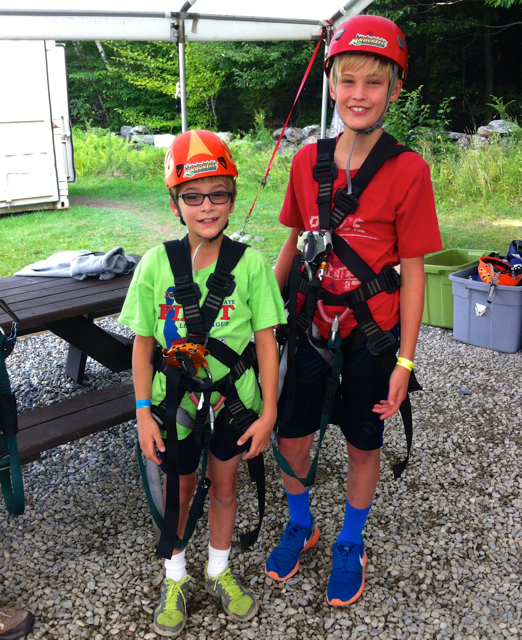
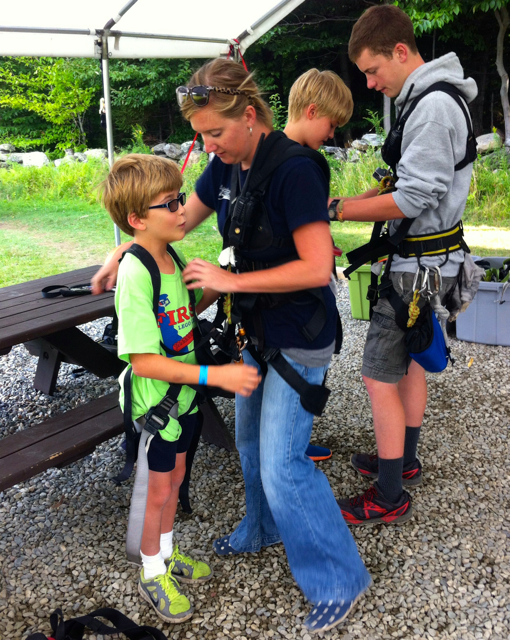

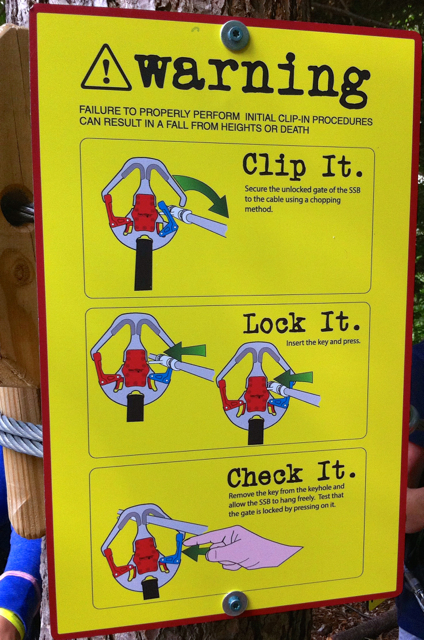

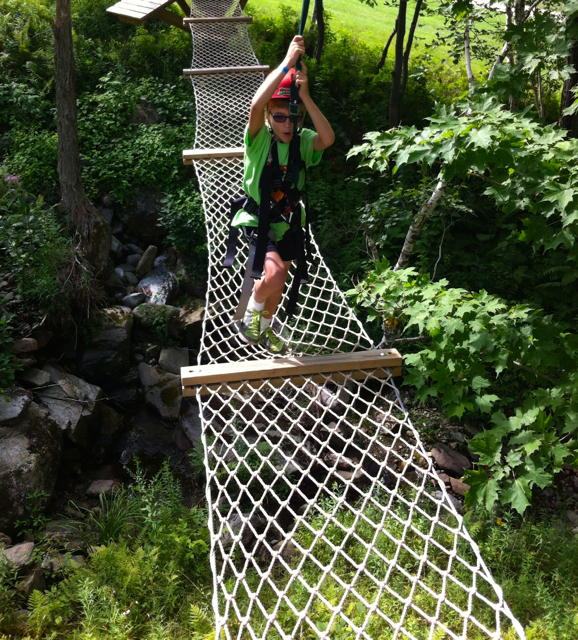

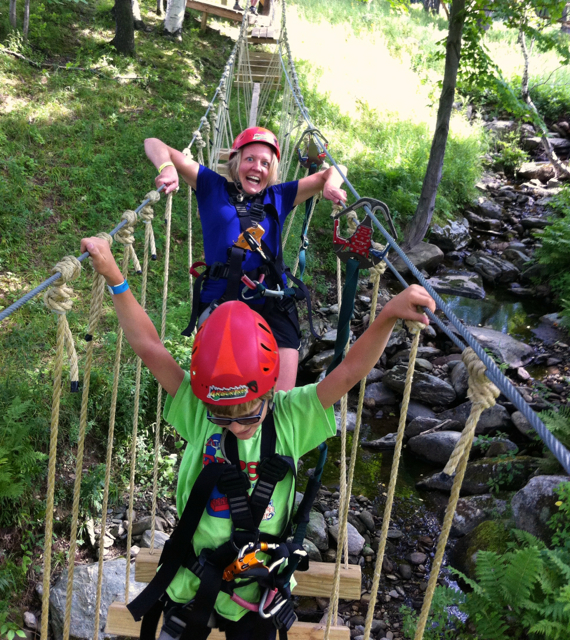
Excellent!!!! Mara you are awesome!